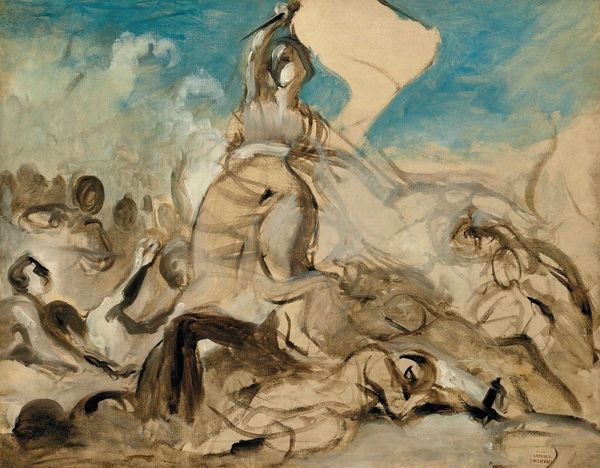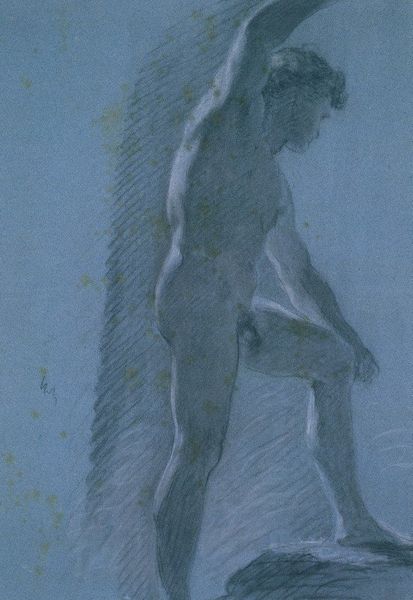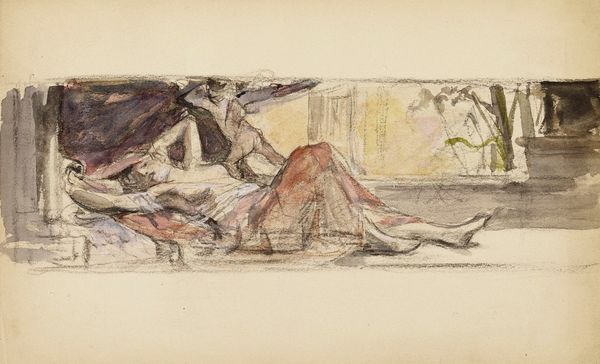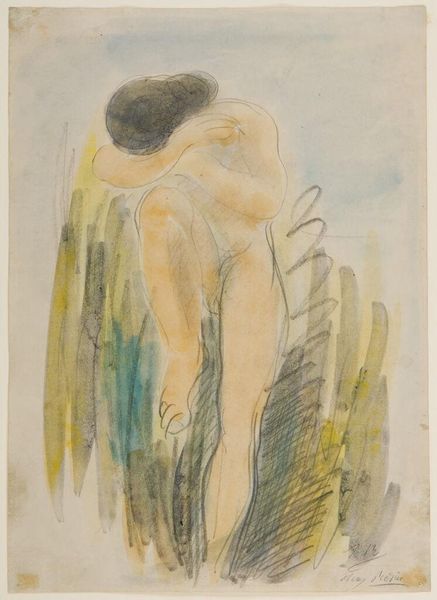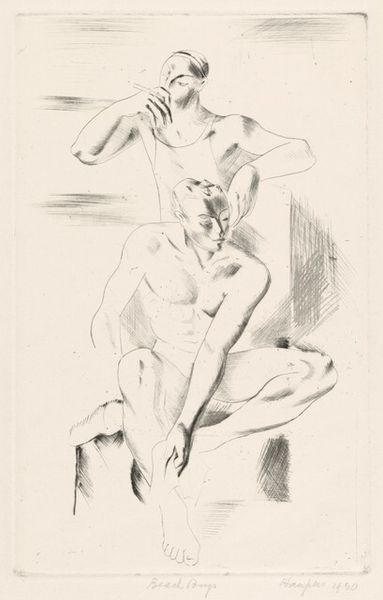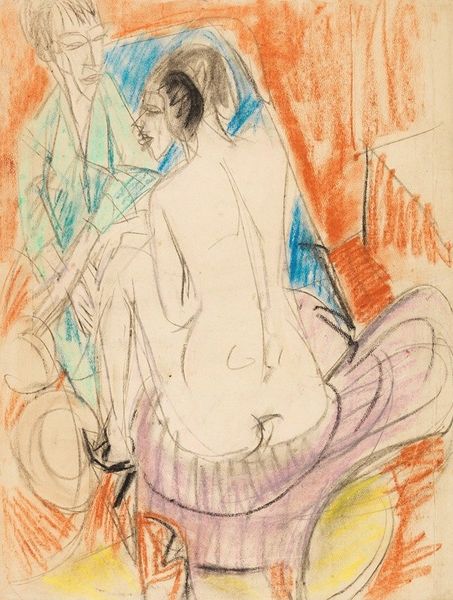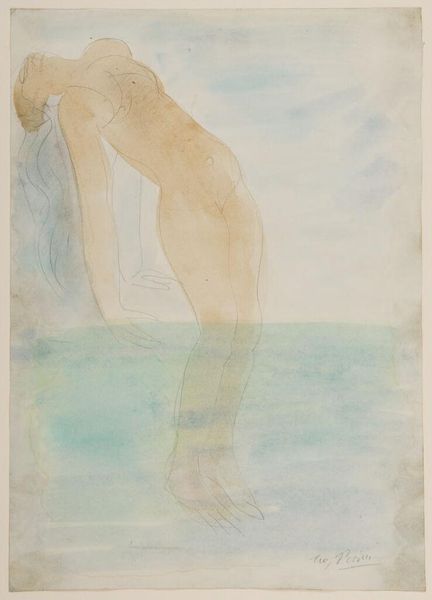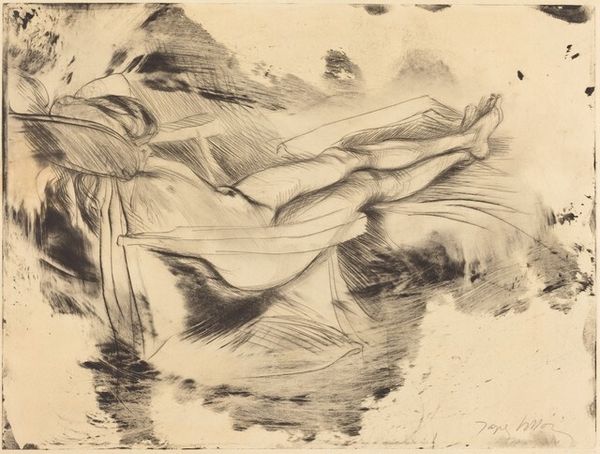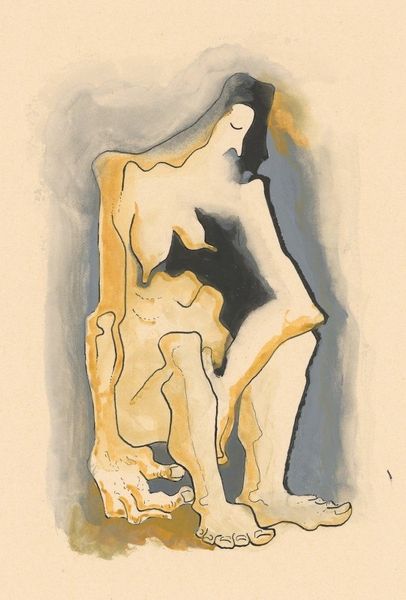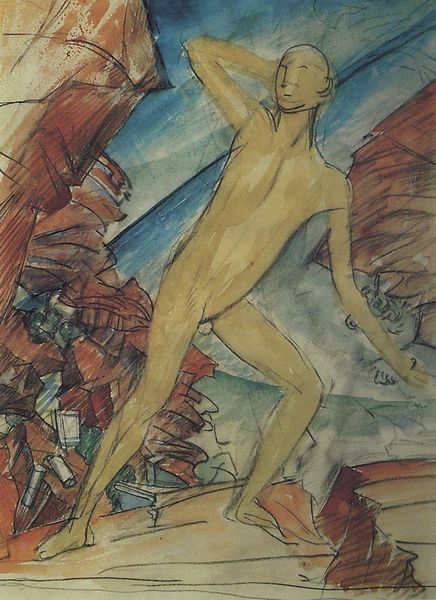
painting, watercolor
#
portrait
#
painting
#
charcoal drawing
#
oil painting
#
watercolor
#
nude
#
portrait art
#
watercolor
Copyright: Petros Malayan,Fair Use
Editor: Petros Malayan’s watercolor and charcoal work titled "Passion", created in 1993, depicts a nude figure in what appears to be a moment of intense emotion. The bold brushstrokes and the subject's posture give the piece a very raw and vulnerable feeling. How do you interpret this work? Curator: It immediately evokes images of classical representations of ecstasy, perhaps Saint Teresa in Bernini’s sculpture. The upturned gaze, the contorted posture, the blue drapery—suggestive of the Virgin’s mantle—all speak to a kind of rapturous surrender. But is it divine, erotic, or something else entirely? Note the artist's use of the traditional medium of watercolor alongside charcoal drawing—itself symbolic of duality, or perhaps conflict? The tension contributes to the central theme. Editor: That's fascinating. The idea of "surrender" makes a lot of sense. I hadn’t considered religious ecstasy. But it does seem to pull from classical iconography. Curator: Exactly. The cultural memory embedded in these visual cues informs our reading, regardless of the artist’s conscious intention. Do you think the "passion" in the title is necessarily about love? What other types of passions might this symbolize? Editor: Maybe pain? Or maybe artistic creation itself. It feels like a very internal moment. Curator: Precisely! The pose is physically vulnerable. Perhaps Malayan alludes to the passions driving artistic creation; the suffering, the vulnerability and ecstasy are linked by both human, and art history. Editor: I see that much clearer now, thank you for pointing those visual cues, the symbols and their relationship to the painting’s message. Curator: My pleasure! It is always in conversation we enrich and enliven art through interpretation.
Comments
No comments
Be the first to comment and join the conversation on the ultimate creative platform.

